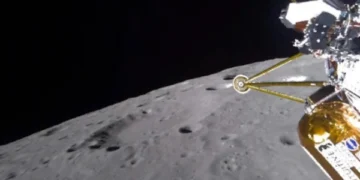The American space agency NASA has discovered an Earth-like planet 40 light-years away from Earth, which may contain signs of life.
An international team of astronomers pinpointed the planet’s location using NASA’s TESS (Transiting Exoplanet Survey Satellite).
Such discoveries are usually made under the ‘transit method’. In this method, a planet is identified when the star’s brightness decreases as it passes in front of its host star.
The exoplanet, called Glaze 12b, is slightly smaller than our planet and has an estimated temperature of 41.6 degrees Celsius, suggesting it has no atmosphere.
The planet Glaze 12b is located in the inner part of the pre-habitable region. The habitable zone in any star system is defined as the distance from the central star where liquid water can exist on the planets.
After the discovery, astronomers are planning to analyze whether the planet has an Earth-like atmosphere.
Glaze 12b has been described by scientists as the closest, moderate-temperature, Earth-sized world and is a candidate for future exploration by NASA’s James Webb Space Telescope.

























